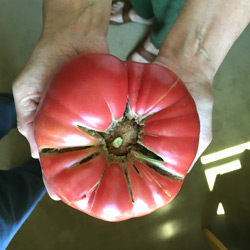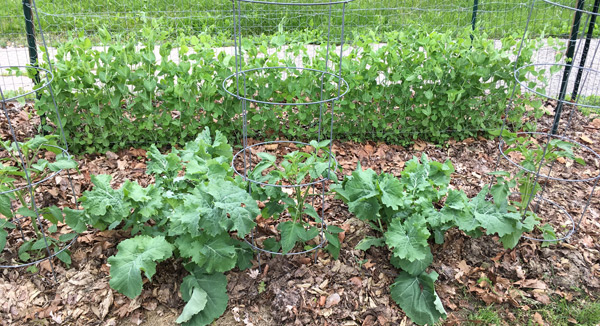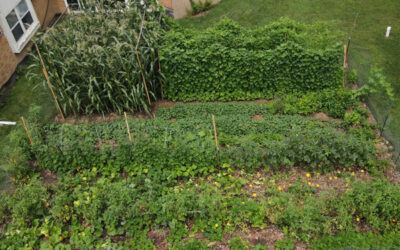One of the biggest surprises I’ve encountered in my promotion of home food gardens is not only how different they are from industrial food, but also local food systems. I think that’s why local, small farmers—the ones who produce food just a few miles from where you live—find it hard to take backyard gardens seriously as a major producer of food. Even when reminded that 40% of vegetable production during WWII was due to the proliferation of some 20 million victory gardens, which was achieved in just a couple years, mainly by average people with little or no previous gardening experience.
Don’t get me wrong, I love local farmers, who constitute the second tier of the food system I’m proposing. And I certainly don’t equate local food systems such as farmers markets, CSAs (community supported agriculture) and the like with industrial food; the local is far superior in most cases. The only reason I don’t say in all cases is that sometimes mainstream supermarkets appropriate the concept of “local” by offering food sourced from up to 400 miles away, even in some cases claiming that it’s anything from adjacent states. Such is food greenwashing.
Still, in contrast to local systems, self-sufficiency gardens provide people with:
On a local level:
- Maximum control over their food supply. That is, not only in terms of how fresh it is but also in knowing precisely the social and physical conditions under which it was grown.
- Direct connection with nature—the soil, outdoor air, sunshine, and the plants and other biological life in the garden
- Life-enhancing exercise involved in the physical activity.
- The fulfillment and satisfaction that comes with growing their own food.

On a national level, in terms of transitioning to an alternative to industrial food:
- Self-sufficiency gardens require no fundamental structural change in the existing system. Since about 33 percent of all households currently have food gardens, and 67% of adults say they either have a food garden or plan to start one, it’s basically a matter increasing the amount of home vegetables already being grown. Seeds, gardening knowledge and supplies, and canning and freezing capacity need only be ramped up from an existing broad base, a far easier proposition than significantly increasing small farm food production from its current contribution of less than 1% of the food supply.
- With sales of seeds, gardening, and home food storage supplies having gone through the roof in the spring of 2020 and 2021, self-sufficiency gardens already have substantial momentum, which gives every indication of accelerating. Local systems, though expanding, are doing so at a much slower pace.
- Self-sufficiency gardens do not require massive spending by the government, although its help would be welcome in the area of community gardens for those who don’t have appropriate garden space. Local food prices, such as those of CSAs, are often undercut by trucked-in grocery store food. Of course, the prices you pay at the supermarket checkout counter reflect less than half of the full cost of industrial food. But as I showed in my book, self-sufficiency gardens can produce a year’s supply of food per person on as little as 1 percent of the 3 acres of land required to feed the average American, with far less energy consumption. They are thus much better positioned than local farms to make up for the unfair price advantage of industrial food, since local farms still rely on farm machinery, fossil fuels, etc., though less so than industrial.
- Much of this is more or less invisible to the average person, who doesn’t see the staggering external costs incurred by the industrial food system, nor the enormous potential of self-sufficiency gardens to supply much to most of our food supply. By contrast, we can, if we’re sustainably aware and concerned, see potential in local foods systems. But we still think that only industrial or local farms are equipped to provide us with significant amounts of food. Why? Well, because that’s what we’ve been conditioned to see and believe for most of our lives.
Do you think it might be time to start seeing things differently?





0 Comments